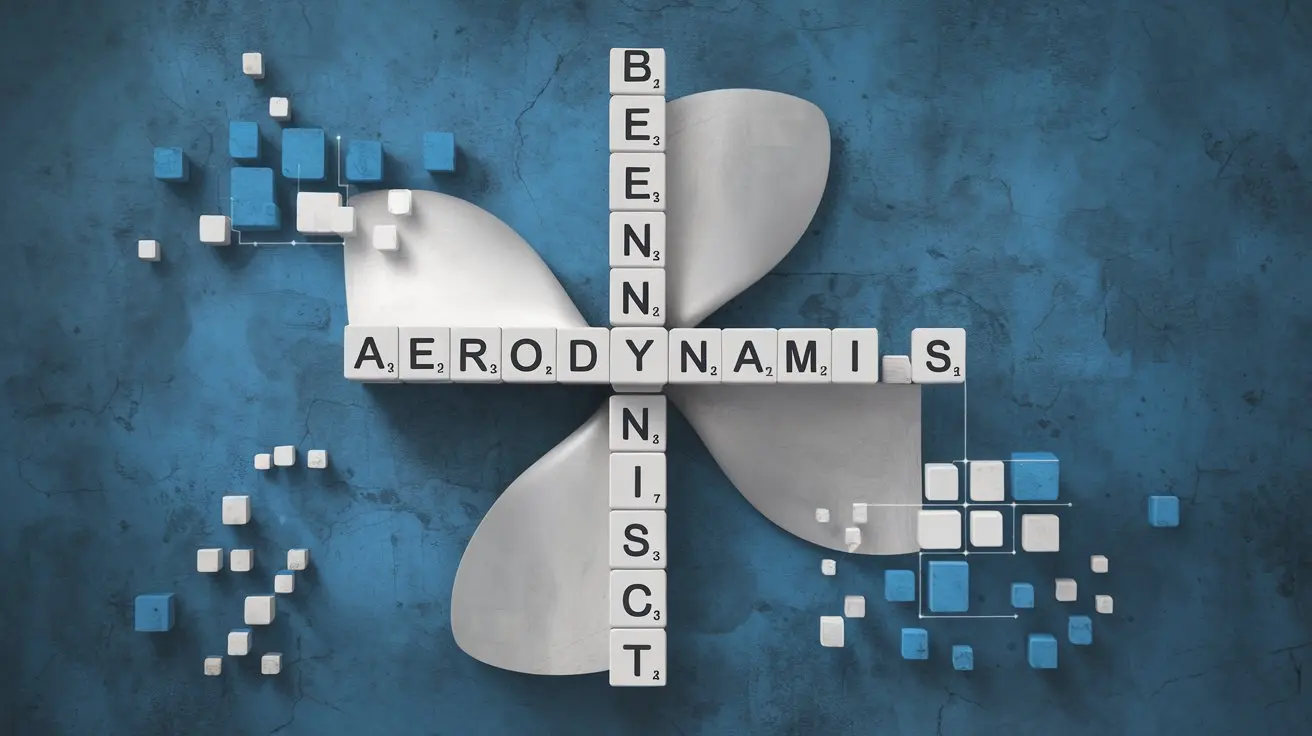Crossword puzzles are a favorite pastime for many. They challenge the mind, improve vocabulary, and provide hours of entertainment. However, some clues can be particularly tricky, and one that often stumps solvers is the “air current from a propeller” clue. If you’ve encountered this clue in your puzzle-solving journey, you’re not alone.
In this article, we will explore the best techniques for cracking this specific clue, along with general tips that can help you navigate similar puzzles with ease. Understanding how crossword clues work and having a few strategies in your toolbox can make all the difference.
Understanding the Clue
First, let’s break down the clue itself. “Air current from a propeller” is a straightforward description, but it can be deceptive if you’re not familiar with certain terminology.
- Air current refers to the flow of air, which in this case is generated by a propeller.
- Propeller is a device that generates thrust through its rotational motion, commonly found on airplanes, boats, and some fans.
Now that we understand the clue, let’s dive into solving it.
Think Literally First
When facing a crossword clue, especially one that seems challenging, it’s often best to think literally. In this case, the clue is describing something specific: the flow of air created by a propeller. What words come to mind when you think of this?
One of the most common answers to this clue is “slipstream”. Slipstream refers to the stream of air that is forced backward by the propeller as it moves through the air. This is often a five to ten-letter word in crossword puzzles, so if your crossword puzzle allows for this word, it’s a good place to start.
Other possible answers include:
- “wake” – this can refer to the disturbed air behind a moving object, though more commonly used with water.
- “downdraft” – a downward current of air, typically created by propeller-driven aircraft.
- “vortex” – although usually associated with spinning air, some crossword setters might use it in relation to propeller currents.
Focus on Word Length
Crossword puzzles typically give you the length of the word you’re looking for. If your clue is asking for a seven-letter word, for example, you can narrow down your options.
- Slipstream fits nine spaces.
- Wake fits four.
- Draft fits five.
- Vortex fits six.
By knowing the length of the answer, you can eliminate some possibilities and hone in on the correct one.
Use Crossword Solver Tools
If you’re stuck, it’s okay to use tools designed to help solvers. Crossword solvers allow you to input the number of letters and any letters you may already know. These tools will then generate a list of possible answers that fit those criteria.
Websites like Crossword Solver and OneLook Dictionary are excellent resources for figuring out difficult crossword clues, including “air current from a propeller.”
Using these tools doesn’t diminish your solving experience. Think of it as using a map on a long journey—sometimes you just need a little guidance.
Consider the Theme of the Puzzle
Many crosswords have themes, especially in larger publications like The New York Times or The Guardian. If you’re solving a puzzle with a specific theme, think about how your clue fits into that.
For example, if the crossword’s theme is related to aviation, terms like “slipstream”, “prop wash”, or “draft” might be more likely than terms that are not specifically associated with flight. Always keep the theme in mind to narrow down your word choices.
Eliminate Unnecessary Complexity
Sometimes solvers overthink clues, assuming the answer is more complex than it is. For example, a clue like “air current from a propeller” might tempt you to think of technical jargon or complicated terms, but the answer could be quite simple.
Words like “wind” or “breeze” may seem too straightforward, but they can sometimes be the correct answer, depending on the puzzle’s difficulty level.
Use Your Cross-Checking Letters
Crossword puzzles are designed to give you clues to the solution, not just within individual clues but through the entire puzzle. As you fill in words in other parts of the puzzle, letters from intersecting words will appear. These cross-checking letters are incredibly helpful in narrowing down your options.
For instance, if you’ve solved part of a word crossing through the air current clue and know that the third letter is “i,” this helps to steer you away from incorrect answers and move closer to the right one. In this case, you might realize that “slipstream” fits perfectly.
Expand Your Vocabulary
While crossword puzzles are meant to be fun, they also challenge your vocabulary. Solving clues like “air current from a propeller” becomes easier the more familiar you are with relevant words.
- Slipstream: The flow of air behind a moving object like an airplane.
- Prop wash: The turbulent air left behind by a propeller.
- Vortex: A swirling mass of air, typically formed in response to an object moving through air or water.
- Draft: A current of air, which could be used for describing the movement of air by a propeller.
By expanding your vocabulary in specific areas, like aviation terms in this case, you’ll be better prepared to tackle challenging clues.
Look at the Crossword Publisher
Different crossword puzzle publishers have different styles. For example, puzzles from The New York Times tend to use more obscure, high-level words, while some other publications may opt for simpler language.
If you frequently encounter crossword puzzles from a specific publisher, it’s useful to learn their patterns. For example, The New York Times might use “slipstream,” while a local newspaper might stick with “draft” or “wake.”
Practice Makes Perfect
As with any skill, practice is key to improving at crossword puzzles. The more you practice, the better you become at recognizing patterns and understanding how clues are worded.
If you’re frequently solving crosswords that include technical clues like “air current from a propeller,” you’ll start to recognize the types of answers that are typically associated with such clues. Over time, you’ll become faster and more efficient at solving them.
Don’t Get Frustrated
Finally, the most important technique for solving difficult crossword clues is to stay calm and patient. Some clues, like “air current from a propeller,” are designed to challenge you, but they’re not impossible to solve. If you’re feeling stuck, take a break and return with fresh eyes.
Crossword puzzles are meant to be fun and engaging, so don’t let frustration get in the way of enjoying the challenge. With time and the right techniques, you’ll be able to crack even the toughest clues.
Conclusion
Solving tricky crossword clues, like “air current from a propeller,” requires a mix of patience, practice, and strategy. By breaking down the clue, considering word length, using crossword solver tools, and expanding your vocabulary, you’ll increase your chances of finding the right answer. Whether the answer is “slipstream”, “wake”, or “vortex”, these techniques will help you confidently approach crossword puzzles and enjoy the process of solving them. Happy puzzling!

